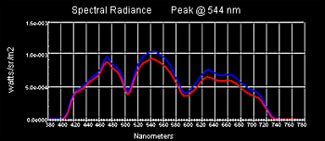

The "GrayHawk" projection screen material


Descriptive graphs from the Stewart FIlmscreen GrayHawk website www.stewartfilm.com
I've been watching with interest the ads in the multimedia mags for the new screen material from Stewart Filmscreen called GrayHawk. According to their website, this new material should improve the depth of black (black level) in images where there is ambient light reflecting off the screen surface.
As you may remember, I've talked about this problem at various times. Basically, in order for the normal white screen to have black parts in the image, either the white portions of the image have to be s-o-o-o bright that they make the adjacent dark portions of the image look black by comparison, or... the white screen needs to be in partial darkness - or a combination of the two. Movie theaters routinely both darken the room and use powerful projectors.
Lacking really powerful video projectors, most of us put up with 1) darkening the classroom more than we'd like, 2) we have the room lights switched so that less light falls on the screen than on the viewer's desks, 3) a combination of the two, or, 4) we have our viewers look at a washed-out image.
Rear-screen systems, your TV set, and your computer monitor get around this problem because the screens are almost
black when they're off, and consequently only the bright portions of the image illuminate the otherwise black screen.
Since the GrayHawk product could potentially make this classroom problem a little easier to solve, I'd like to pass on any information to CDF readers from those of you who have had a chance to make a side-by-side comparison of the GrayHawk screen with your normal white projection screen.
If you haven't heard of Stewart's new material, visit their site at www.stewartfilm.com
Tell us your experiences thru E-mail:

ClassroomDesignForum.org is listed
by the National Clearing House for Educational Facilities (NCEF)
Links available thru this site retain their own copyrights.